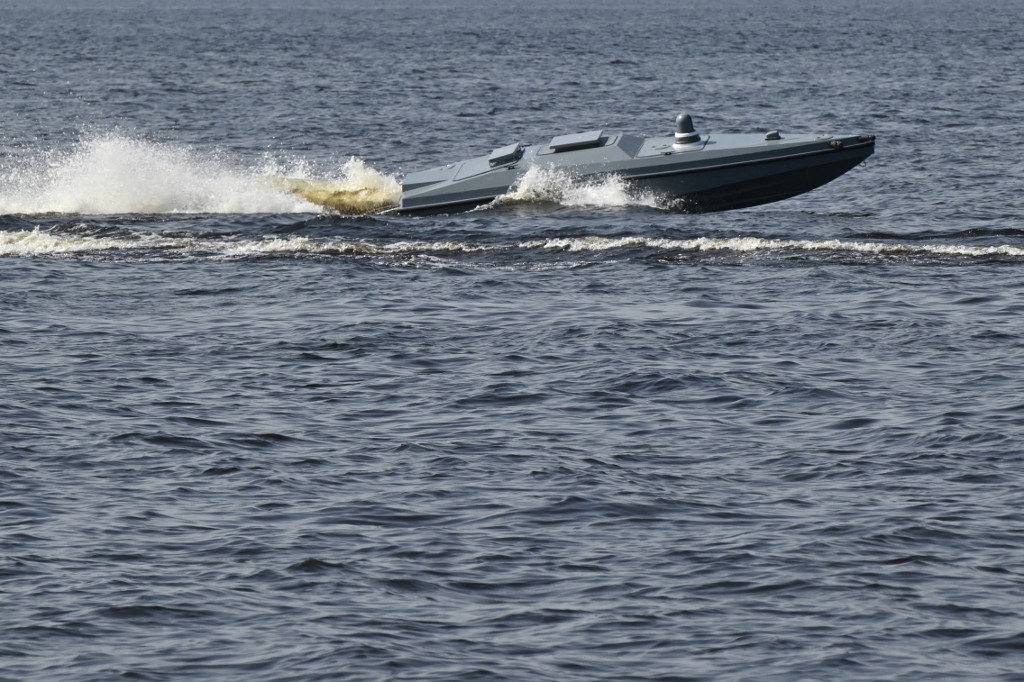A rescue flotilla dispatched by Russian naval authorities to recover troops and equipment evacuating Syria was far from its destination and spread out across the open seas, according to international shipping databases on Tuesday.
Ukrainian military information platforms reported on Dec. 25 that Russian naval authorities were assembling a five-ship convoy of transport vessels sailing in two groups, with the ultimate destination being Tartus in Syria, Russia’s sole naval base in the Mediterranean Sea.
JOIN US ON TELEGRAM
Follow our coverage of the war on the @Kyivpost_official.
Analysts have predicted the Russian evacuation of substantial forces from Syria, and possibly the base itself, following the downfall of Russian ally and former Syrian authoritarian leader Bashar al-Assad. The Russian attempt to concentrate transport vessels for evacuation is going slowly and has already hit obstacles.
One group of two ships, the Sparta II heavy transport vessel and the tanker General Skobelev, per Tuesday’s tracking data, had left Russian naval bases in the Baltic Sea and were in the southern Bay of Biscay, some nine days’ sailing from their announced destination the Egyptian Port Said, tracking platforms showed.
A second group of three vessels included the amphibious assault warships Ivan Gren and Aleksandr Ostrakovskiy, according to Ukrainian media and Portuguese Navy statements. Ukrainian sources said the civilian heavy transport vessel Sparta I was also part of the group.

Russia to Move Forces From Syria to Libya – HUR
The Ivan Gren and Aleksandr Ostrovsky are combat vessels designed to land troops in a beach attack. Each is rated to carry a maximum of three dozen combat vehicles and around 300 fully-armed troops. The Sparta I is a “Ro-Ro” vessel so-named for having the ability to load vehicles by the vehicle’s driving aboard under its own power.
The two Russian warships, according to a late December Portuguese Navy press release entitled “We. Are. Watching.,” passed the Strait of Gibraltar early in the evening on Dec. 22 and entered the Mediterranean. The navy patrol ships NRP Álvares Cabral and NRP Sines escorted the Russian ships through Portuguese Economic Zone waters, the statement said. There was no mention of civilian ships monitored by Portuguese authorities.
Others reported that Sparta I and a similar vessel named Ursa Major passed the Strait of Gibraltar at approximately the same time with the same heading.
On Dec. 24, the Ursa Major sank off the coast of Spain after an unexplained engine room explosion. Fourteen crew members were rescued and two were missing. A Spanish warship observed the sinking, but a Russian military vessel took charge of rescue operations, news reports said.
According to open source materials and a Russian Foreign Ministry statement, the Ursa Major had been carrying nuclear icebreaker reactor hatches and two Germany-manufactured port cranes with a 120-ton capacity to the Russian Far East port Vladivostok.
A statement by Ukraine’s Defense Intelligence (HUR) said that the vessel had been tasked with participating in Russia’s evacuation effort from Syria, and it identified the ship’s owner as Oboronlogistika, a Russian military contractor supporting the Russian Defense Ministry’s logistics operations.
International tracking systems on Tuesday showed no sign of the two Russian warships’ location – a possible indication that the captains had ordered ship trackers turned off while in open seas.
However, the Sparta I was visible to civilian tracking networks on Tuesday, and it was shown to be some 150 km southeast of Sicily. No information was available on Sparta I’s past track. However, had the ship sailed directly to Port Said at normal speeds, it would have reached its destination last week. A possible explanation would be that the ship (and possibly the two warships) are marking time at sea.
Yigal Levin, an Israeli military writer, said in a Saturday comment that the Sparta I, once reaching the central Mediterranean, “has begun to act strangely,” reducing its speed to six knots and apparently sailing in circles. The warships Ivan Gren and Aleksandr Ostrakovskiy have likely pressed onward, he said.
As to their real destination, Yaval said of Sparta I: “Officially, it was heading to Egypt, but everyone, not without reason, believed that its real purpose was to help evacuate Russian military equipment from Syria. However, it has now fallen behind the formation, which also included two large landing ships, which are continuing their journey to Syria.
“Considering the recent sinking of the Ursa Major, one can expect that strange occurrences with the Russian fleet in the Mediterranean will spread and continue,” Yigal said.
You can also highlight the text and press Ctrl + Enter






